Beginner’s Guide To Yarn Weights for Knitters
If you are looking for some answers about what yarn weights are and why they are important to knitting, then this guide will help.
Below, I will explain what yarn weight numbers are on the label of yarn and about each of the different yarn weight classifications.
What Do Yarn Weight Numbers Mean?
Yarn weight has nothing to do with how much it weighs, but actually with how thick or thin the strand of yarn is. There are standard yarn weights that are set by the Craft Yarn Council.
Even so, there are still variations found within each weight class of yarn due to texture (think scrubby yarns) or slight changes in thickness of a yarn.
Yarn Weight Descriptions
Use our yarn weight types chart below as a guide to determine what yarn weight needs to be used according to what the knit pattern asks for.
You can learn more about each of the different yarn weights, as well as what knitting needle sizes work with each yarn.
The yarn weight categories explained below are based on the CYC (Craft Yarn Council) Standard Yarn Weight System.
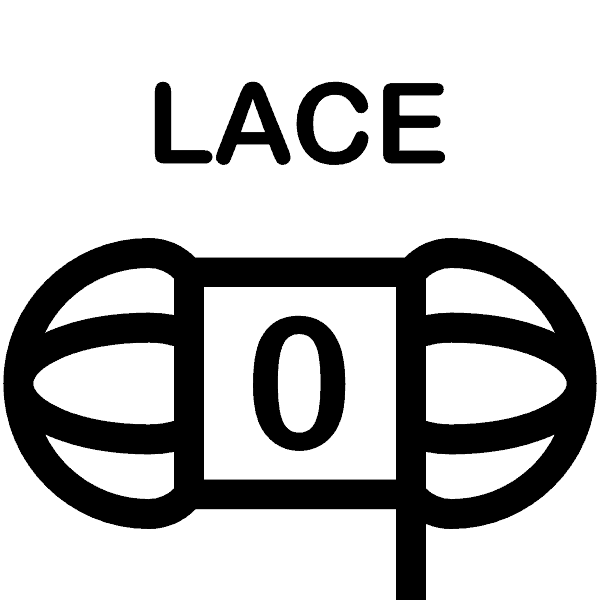
Weight #0 or Lace includes yarn type fingering 10-count thread. This weight of yarn is commonly used with the US needle size of 000–1. The metric equivalent is 1.5 – 2.25 mm knitting needle.
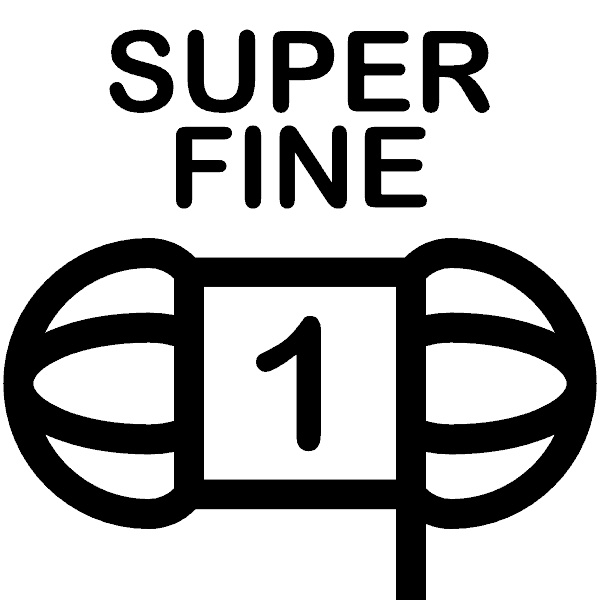
Weight #1 or Super Fine includes yarn types of sock, fingering, and baby. This weight of yarn is usually knitted using the US needle sizes of 1-3 and the metric sizes of 2.25 – 3.25 mm.

Weight #2 or Fine includes yarn types of sport and baby. This weight of yarn is typically knitted using the US needle sizes of 3-5 and the metric sizes of 3.25 – 3.75 mm.

Weight #3 or Light yarn includes the yarn types of DK and light worsted. This weight of yarn is typically knitted using the US needle sizes of 5-7 and the metric sizes of 3.75 – 4.5 mm.
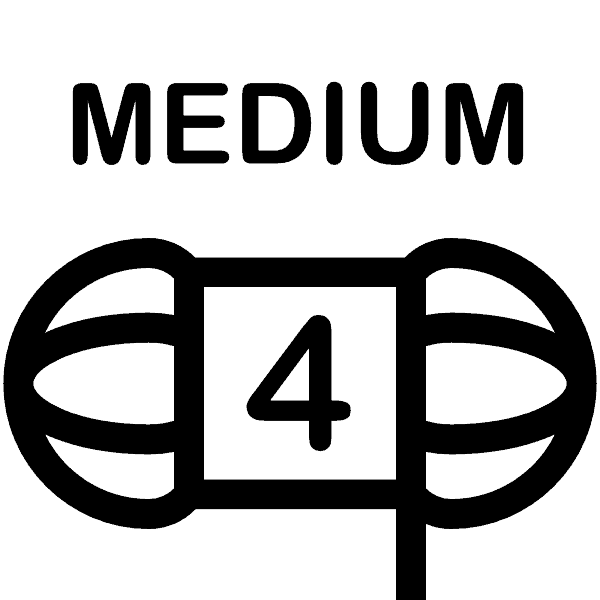
Weight #4 or Medium yarn includes the yarn types of worsted, afghan and aran. This weight of yarn is typically knitted using the US needle sizes of 7-9 and the metric sizes of 5.5 – 6.5 mm.

Weight #5 or Bulky yarn includes the yarn types of chunky, craft and rug. This weight of yarn is usually knitted using the US needle sizes of 9-11 and the metric sizes of 5.5 – 8 mm.

Weight #6 or Super Bulky includes the yarn types of super bulky and roving. This weight of yarn is typically knitted using the US needle sizes of 11-17 and the metric sizes of 8 – 12.75 mm.

Weight #7 or Jumbo includes the yarn types of jumbo and roving. This weight of yarn is typically knitted using the US needle sizes of 17 (and larger) and the metric sizes 12.75 mm and up.
| Yarn Weight | Common Names | Needle Size |
|---|---|---|
| #0 – Lace | Lace, Cobweb, Thread | 000-1 |
| #1 – Superfine | Baby, Sock, Fingering | 1-3 |
| #2 – Fine | Baby, Sport | 3-5 |
| #3 – Light | DK, Light | 5-7 |
| #4 – Medium | Worsted, Aran, Afghan | 7-9 |
| #5 – Bulky | Chunky, Craft, Rug | 9-11 |
| #6 – Super Bulky | Roving | 11-17 |
| #7 – Jumbo | 17+ |
Yarn Weight Conversion Chart
I get numerous questions about yarn weights in my knit patterns, but more specifically how to use a yarn that is in US terms vs UK terms vs Australian terms.
Below, in the yarn weight chart, the standard US yarn weight terms are side-by-side with their equivalent United Kingdom and Australian terms. Whether you are crocheting or knitting, this yarn size chart can help!
Yarn Size Chart
| USA | UK | Australia |
|---|---|---|
| #0 – Lace / Fingering | 1 ply | 2 ply |
| #1 – Super Fine / Sock / Fingering | 2 ply | 3 ply |
| #2 – Fine / Baby | 3 ply | 3 ply |
| #2 – Sport | 4 ply | 5 ply |
| #3 – DK / Light Worsted | DK | 8 ply |
| #4 – Worsted | Aran | 10 ply |
| #5 – Bulky | Chunky | 12 ply |
| #6 – Super Bulky | Super Chunky | 14 ply |
| #7 – Jumbo / Roving | n/a | n/a |
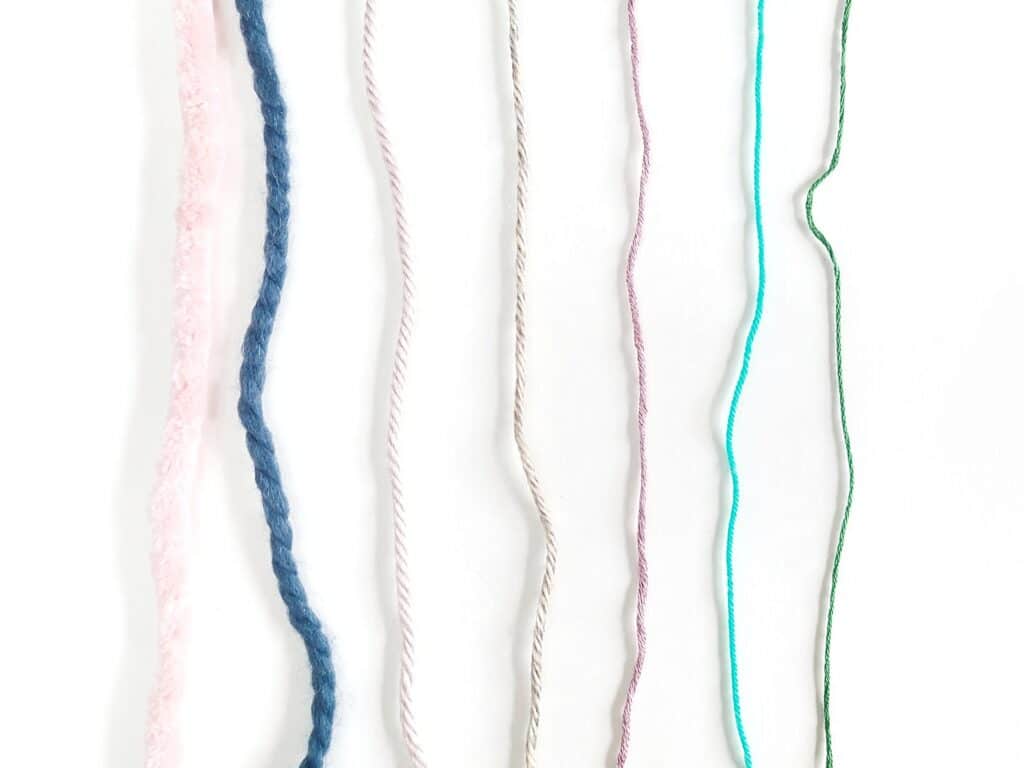
How Do I Tell What My Yarn Weight Is?
It is easy to know what the yarn weight is of yarn. The yarn weight of most yarns can typically be found on the side of most yarn packages or yarn labels. You will see a number ranging from zero to seven, which will be the weight of the yarn. Whatever number you see on the yarn label, that is what the yarn weight is.
If you have yarn that doesn’t have a label, you can use the “WPI” method or wraps per inch to determine the yarn weight. You can learn more about WPI in the FAQ section below.
Yarn Weight FAQ’s
What Does Ply Mean in Yarn?
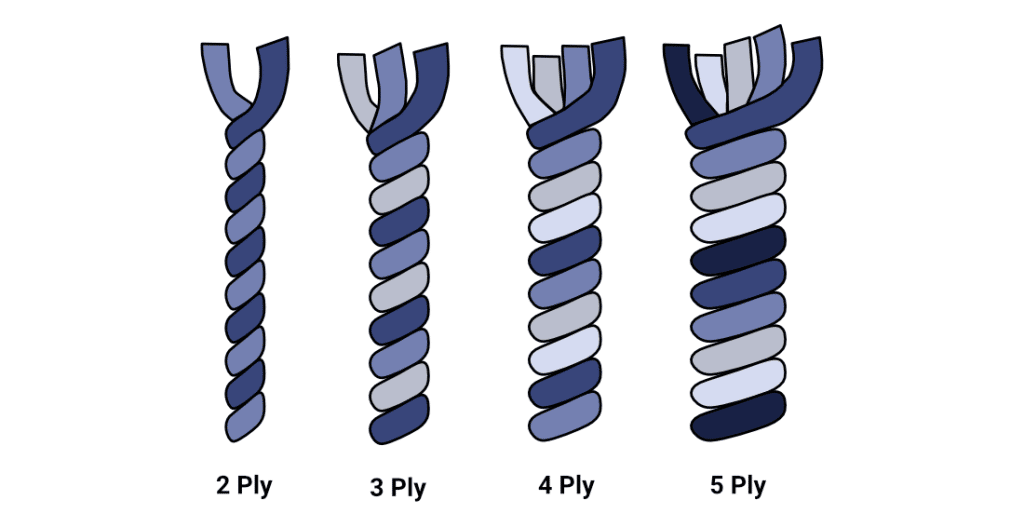
Plied yarns are composed of two or more single yarns twisted together in the opposite direction from which they were spun. 2-ply yarn, for example, is composed of two single strands, and a 3-ply yarn is composed of three single strands, and so on. The ply of yarn is not an indication of thickness. A yarn with 2 plies can be very thick or very thin, depending on the thickness of each ply.
What does “WPI” mean in Knitting?
WPI is a way to measure yarn weight per inch using a ruler and a pencil. To measure yarn weight using the WPI method, wrap the yarn around a small object like a pencil or Tunisian crochet hook for a few inches. You can also find WPI measuring tools to use in place of the pencil and ruler too. The wrapped yarn should be side by side and not overlapping. Next, use a ruler to measure how many wraps are per inch to determine yarn weight using the WPI chart below. Keep in mind, this method to figure out yarn weight is not always accurate, since some may wrap yarn tighter than others.
Wraps Per Inch (WPI) by Yarn Weight Chart
| Yarn weight | WPI |
|---|---|
| #0 – Lace | 32+ |
| #1 – Super Fine | 14-30 |
| #2 – Fine | 12-18 |
| #3 – Light | 11-15 |
| #4 – Medium | 9-12 |
| #5 – Bulky | 6-9 |
| #6 – Super Bulky | 5-6 |
| #7 – Jumbo | 0-4 |
What yarn weight should I Use for my project?
Most knit patterns will include what yarn weight to use on that particular project. If you’d prefer to use up some yarn you have on hand and your pattern, I’d suggest taking a look at the type of project you are going to make. If you want to knit a blanket for winter you will want to use a thicker yarn, but if you are making a lightweight shawl for summer you should use a yarn weight of one to three.
Does Yarn weight matter in projects?
Yes, yarn weight matters in patterns. If a knit designer calls for a four weight yarn to use with their gauge swatch, but you use a different type of yarn such as a five or six, the size of the project will turn out bigger.
What are the different types of yarns?
Yarn can not only be different weights, but it can be made of different fibers too. You can find yarn made with cotton, acrylic, bamboo, wool like alpaca and even dog hair. When you explore different fibers, you will want to make sure it fits the project you will be using it for. You want to avoid making a wool baby blanket for example because that would be very itchy on a babies sensitive skin.